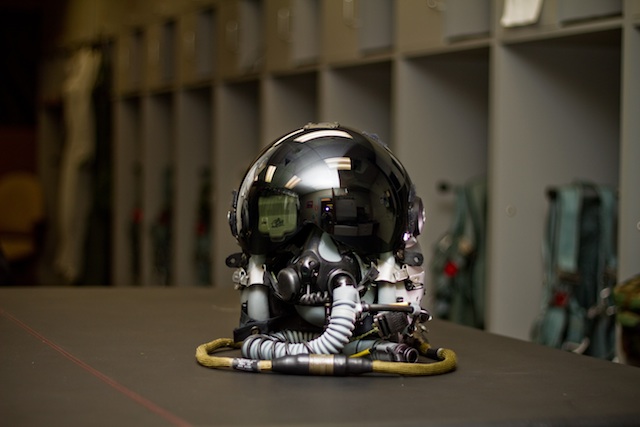The US Air Force confirms that its digital helmet-mounted display (DHMD) project seeks to develop technology for use on a variety of aircraft, including tankers, transports and most jet fighters.
The service tells Flightglobal its DHMD effort, detailed in documents posted on the government’s procurement website, aims to develop technology that could be paired with Gentex HGU-55/P and HGU-56/P helmets. Pilots who fly all USAF fighter aircraft, with the exception of Lockheed Martin's F-35, use HGU-55/P helmets, it says, as do some pilots of USAF fixed-wing cargo, tanker and airlift aircraft.
Pilots of Bell UH-1 and Sikorsky HH-60 Pave Hawk helicopters, and Bell-Boeing CV-22 tiltrotors use HGU-56/P helmets.
Flightglobal reported on 21 March that the USAF had released a request for information about new helmet display technology, but this did not specify the aircraft for which the system was intended. The service wants technology that improves a pilots' situational awareness and helps better identify ground targets.
A new helmet display system would digitally incorporate night vision, make better use of symbols and have eye-tracking technology that displays information where pilots look, rather than where they face, the USAF says.
In addition, the USAF wants helmet technology that monitors pilots’ health and the oxygen and carbon dioxide levels in their helmets. Oxygen-related issues in Lockheed F-22s were found to have caused a series of hypoxia-like incidents that led to a four-month grounding of the Raptor fleet in 2011. An oxygen system problem also preceded one fatal crash.
In a related development, the New Jersey Air National Guard’s 177th Fighter Wing announced on 27 March that it acquired helmet-mounted integrated targeting (HMIT) systems, which will be paired to HGU-55/P helmets.

US Air Force
Pilots in several National Guard squadrons of Lockheed F-16s and Fairchild Republic A-10s will use the systems, the 177th Fighter Wing says.
The HMIT system has a glass eyepiece and improves air-to-ground targeting by slewing the sensor in an aircraft's targeting pod in the direction that the pilot looks, it says. This “head-steered weapons” ability allows pilots to maintain a safer distance by acquiring targets while flying parallel to them, a document from the National Guard Association of the United States states.
“Currently, pilots typically acquire targets by pointing the aircraft at the target. This tactic is both time-consuming and requires the pilot to manoeuvre their aircraft closer to the threat,” the Guard Association says.
The HMIT eyepiece also can identify friendly and enemy forces.
“This is definitely going to extend the lifespan of the F-16, and we are probably one of the first units to get it,” the 177th Fighter Wing tells Flightglobal.
Source: FlightGlobal.com























